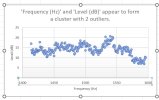XTC is a rather a simple process and not too complicated. The principle involves sending and inverted sound of the opposite channel to the other hear to attenuate the level at the opposite ear. This process continues until the ears no longer hear the unintended sound ( crosstalk ).
The simple process gets complicated because the sound heard by the intended ear and the delayed crosstalk heard by the other ear are not of the same frequency response as HRTF modifies the response. Other XTC, like BACCH does not make the correction why requires EQ to account for the changes as such getting high attenuation with non EQ XTC is not possible.
The recursive nature of cancellation can be done with effects like ping pong and or even a convolution engine using IR. The problem of using EQ with such cancellation is that EQ introduces phase changes. Alternatively, to response is broken into different frequency range so that the cancellation level can be adjusted for other ear as higher frequencies gets attenuated far more than the lower frequencies due to head shadow.
But all this while looks nice on paper, in practice it is not so simple because our head is constantly moving which makes such high precision cancellations redundant.
OTOH, we are reading about the effectiveness of XTC over another. I have witnessed or rather heard a non RACE XTC somehow projected the binaural recording well behind my head which I don’t even get such even with headphones. Does this qualify to be superior to other XTC? Unfortunately, listening to my fav “Norah Jones” I rather stick to stereo if I had to use such XTC which seemed to doing extraordinary things that XTC not supposed to do as this is stepping into artificial placements. No wonder some XTC emphasis the word that their plugin is intended for binaural recording. In my opinion, any XTC kills the enjoyment of song like Norah Jones or my favorite Hotel California is definitely not worth its place in audiophile world.
Lastly, can XTC cause coloration? I believe most XTC I tried sounded almost like stereo( when correctly setup) and I am always wondering about this claim.

